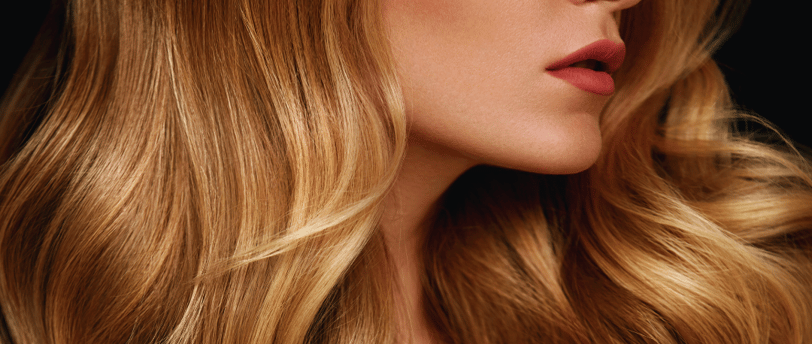How to Identify Hair Loss and Restore Its Volume and Shine
Is your hair looking thinner, duller, or less lively than before? In this blog, we break down how to identify the early signs of hair loss with simple tests and practical observations. Learn why hair loses its volume and shine, and discover easy, effective tips to bring back your hair’s health. From improving your diet to choosing the right hair care products and trying natural remedies, I have got you covered. Get ready to restore your hair’s fullness, strength, and glow!
HAIR-CARE
12/22/20243 min read


Hair is often called our “crowning glory,” so it’s natural to feel concerned when it starts thinning or losing its shine. Watching your once-lush locks become dull and sparse can be frustrating and even emotional. But before jumping into solutions, the first step is understanding why it’s happening and how to identify the early signs of hair loss.
In this blog, we’ll help you figure out what’s causing your hair issues, guide you through simple tests to assess your hair health, and share actionable tips to restore its volume and shine. Don’t worry—you’re not alone, and there’s hope for healthier hair ahead!
Why Is My Hair Losing Volume and Shine?
Hair loss and dullness can occur for many reasons, and it’s often a combination of internal and external factors. Here are some common culprits:
Stress: High stress levels can disrupt the hair growth cycle, leading to shedding and breakage.
Poor Nutrition: Your hair needs nutrients like protein, iron, and vitamins to grow strong and shiny.
Heat Damage: Excessive use of heat styling tools can weaken your hair, making it prone to breakage.
Hormonal Changes: Pregnancy, menopause, or thyroid issues can affect hair growth.
Scalp Health: An unhealthy scalp—due to dandruff, buildup, or dryness—can weaken your hair roots.
Overstyling: Tight hairstyles, chemical treatments, and harsh products can damage your hair over time.
How to Identify If You’re Losing Hair
Hair naturally sheds every day, but how do you know when it’s more than normal? Here are some tests and signs to help you figure it out:
1. The Strand Test
Take a small section of your hair and gently run your fingers through it. If more than 5-8 strands come out, it could be a sign of excessive shedding.
2. The Hairline Test
Look closely at your hairline in a mirror. Is it receding or thinning compared to old photos? If so, it may be a sign of hair loss.
3. Check Your Pillow and Shower Drain
Notice an unusual amount of hair on your pillow when you wake up or in the shower drain after washing your hair? This could be a sign of increased shedding.
4. Scalp Visibility
Is your scalp more visible than before, especially in areas like the crown or parting? This is often an indicator of thinning hair.
5. Texture and Shine Test
Run your fingers through your hair. Does it feel rough, brittle, or lifeless? Healthy hair should feel smooth and soft.
Tips to Restore Hair Volume and Shine
Once you’ve identified that your hair needs help, it’s time to take action. Here’s how you can bring back your hair’s natural volume and shine:
1. Improve Your Diet
Your hair reflects your overall health, so start by nourishing your body from the inside out.
Eat Protein-Rich Foods: Eggs, fish, beans, and nuts provide the building blocks for strong hair.
Add Iron and Zinc: Spinach, lentils, and red meat promote hair growth.
Boost Vitamin Intake: Vitamin C helps with iron absorption, while biotin and Vitamin E support healthy hair.
2. Be Gentle With Your Hair
Handle your hair with care to prevent further damage.
Avoid Overwashing: Washing too often can strip your scalp of natural oils. Aim for 2-3 times a week.
Use a Wide-Tooth Comb: This minimizes breakage, especially when detangling wet hair.
Avoid Tight Hairstyles: Ponytails and buns can stress your hair roots and cause thinning.
3. Switch to Nourishing Products
Choose hair products that cater to your specific needs.
Mild Shampoo: Look for sulfate-free formulas to prevent dryness.
Deep Conditioning: Use a hydrating mask once a week to restore moisture.
Leave-In Products: Opt for serums or oils that smooth frizz and add shine.
4. Scalp Care Is Essential
A healthy scalp means healthy hair.
Exfoliate Your Scalp: Use a scalp scrub or brush to remove buildup and improve blood circulation.
Massage Your Scalp: Massage with coconut or castor oil to nourish roots and stimulate growth.
Treat Dandruff: Use an anti-dandruff shampoo if needed to maintain scalp health.
5. Protect Your Hair From Damage
Prevent further harm by being proactive.
Limit Heat Styling: If you must use heat tools, apply a heat protectant spray.
Avoid Harsh Chemicals: Stay away from frequent coloring, bleaching, or chemical straightening.
Use Silk Pillowcases: They reduce friction and prevent breakage while you sleep.
6. Try Natural Remedies
Nature offers powerful solutions for hair care.
Aloe Vera: Apply aloe vera gel to your scalp to reduce dryness and promote growth.
Egg Mask: Whisk an egg with olive oil and apply it to your hair for a protein-rich treatment.
Onion Juice: Massage onion juice into your scalp to boost circulation (rinse thoroughly to remove odor!).
7. Stay Hydrated and Reduce Stress
Drink Water: Hydrated hair is shinier and less prone to breakage.
Practice Stress-Relief Activities: Yoga, meditation, or even a relaxing walk can help balance your hormones and reduce hair loss caused by stress.
Key Takeaways
Hair loss and dullness can feel overwhelming, but understanding the root cause is the first step toward restoring your hair’s health. By nourishing your hair with the right diet, gentle care, and targeted treatments, you can bring back its volume and shine.
Remember, consistency is key. Hair growth takes time, so be patient and treat your locks with love.
Explore
Discover tips for skincare, bodycare, and haircare.
Contact-
© 2024. All rights reserved.
